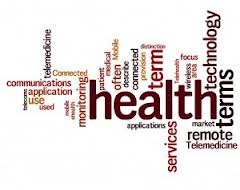
Staying Independent – Telecare and Telehealth
Telecare and Telehealth are both technology-based system which can help you to live independently by alerting a response centre or a carer if there is a problem in the home or a problem with the health of an individual. These systems are designed not to replace a carer, but to allow peace of mind if a carer cannot be present. They differ from personal alarms, in that the receiver of the alarm does not need to be in the vicinity and can be a trained professional such as a a health professional or part of a response team.
What is Telecare?
Telecare consists of technology-based equipment which can help you feel safe and independent in your home. Sensors around your home monitor for risks such as a gas leak or fire, can remind you to take pills and can even alert someone if you have a fall. Depending on your needs and wishes, the sensors can automatically highlight risk to a help centre (who can then arrange for someone to come to your home to assist you), or they can alert a doctor, relative or emergency services. It can also alert you to any risks thorough alarms, flashing lights, or a vibrating box for your pocket.
Telecare does not need the person being looked after to activate the alarm.
What can telecare help with?
There are devices which can help keep you feeling secure and independent by alerting all types of risk. Knowing that the sensors will automatically alert a response centre can offer peace of mind for you and your relatives and friends and can allow carers to leave the house or get a good night’s sleep knowing that they will be alerted if there is a problem.
Flood and smoke detectors
These detectors will sound an alarm and contact the response centre or carer.
Gas detector
This sensor can detect carbon monoxide and can shut off the gas supply as well as contacting the response centre.
Epilepsy sensor
This sensor can raise an alarm if a seizure is detected in the night through monitoring of the vital signs from under a foam mattress.
Bed or chair occupancy
This sensor is placed under a chair cushion, wheel chair cushion or mattress and can alert the response centre if you leave the bed or chair and do not return within a set amount of time.
Fall detector
The carer or response centre will be contacted automatically if a fall is detected by this small sensor which is worn on the wrist or attached to clothing. There are also movement sensors which monitor your movements but do not take pictures or film you. If they do not detect movement for a set amount of time, they will alert your carer or response centre. Pull cords will also alert help and are often used in bathrooms where people may not be wearing a sensor.
Wandering sensor
This device alerts the response centre if someone leaves the property as set times of the day or night. It can also detect if a main door has been left open.
Panic button
This allows the user to raise the alarm silently if they think an intruder or bogus caller is trying to enter the property.
How do I get a telecare package?
Combined packages / kits of telecare equipment are available. These include starter kits, and packages focusing on different needs. For example, packages are available with the necessary control box and sensors to monitor for falls, or focus on home security. Your care assessment should help identify which type of telecare package would be useful for you.
Telecare packages can be bought privately from specialist shops. However, these can be expensive and they could be part or fully paid for by social services, the NHS or Housing Associations, depending on your circumstances. If you have already had your care assessment, ask your care manager if you qualify for help.
What is Telehealth?
Telehealth devices can monitor your health at home and can relay this information directly to medical staff at a hospital or local surgery. It allows your care provider to monitor your vital signs when required, even if they are unable to travel to your home. Examples include support for people with asthma, stroke, a heart condition, lung problems or diabetes. A telehealth system can monitor oxygen levels in the blood, blood sugar levels or blood pressure to name but a few, and can alert the medical team directly if the daily reading is abnormal or if an emergency occurs.
Your doctor or health care team should be able to advise you on your suitability for telehealth and can indicate whether you might be eligible for free or part-funded provision
Further advice on Telecare and Telehealth can be found at:
Assist UK
Living made easy (run by the Disabled Living Foundation)
Related Advice Articles - Staying Independent
Staying Independent - Care in my Own Home
Many of us want to live independently in our own home for as long as possible, but may be in a position where we need a ... More
4 April 2013
Staying Independent - Adaptations to Your Home
If you have chosen to live in your own home, there are many types of specialist equipment or adaptations to your home that can be made ... More
4 April 2013
Staying Independent – Personal Alarms
What are personal alarms? Personal alarms help to provide peace of mind for you and your carer whilst supporting independent living. They differ from Telecare systems because ... More
4 April 2013
Staying Independent – Occupational Therapy
How can an Occupational Therapist help? If you have decided that you need a little extra help with day to day living but want to remain in ... More
4 April 2013